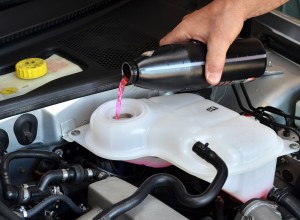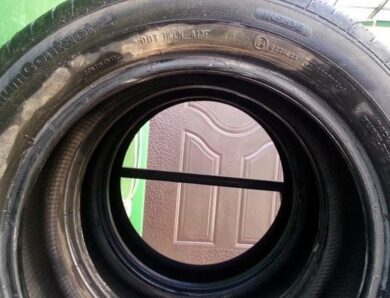The engine fires at the carburetor: the cause and solution of the problem
A fairly common problem with carburettor cars is the characteristic claps in the carburettor. The malfunction may appear then, when the engine starts and fires into the carburetor, and also during the operation of the internal combustion engine after starting the power unit. Let's note at the very beginning, that experts consider the main reasons to be severe depletion of the fuel-air mixture, moment of ignition or failures in the operation of the gas distribution mechanism, associated with misaligned phases.
We also recommend reading the article about it, how to tune the carburetor yourself. From this article, you will learn about available methods of finishing carburetor systems.
As for the CIS, most carbureted cars on the road are Russian-made models. Next, we will look at the problems, when the VAZ engine fires at the carburetor, why does it shoot at the carburetor 406 engine, as well as talk about it, how to identify and eliminate such malfunctions with your own hands.
What shall I do, if the engine shoots the carburetor and muffler
The appearance of shocks in the muffler and carburetor is usually accompanied by a whole list of other symptoms:
- the engine "shoots" and does not start;
- work at XX is extremely unstable;
- the engine loses power and does not "pull";
- the motor is prone to overheating;
- fuel consumption increases significantly;
Reactions of the unit to pressing the gas pedal in this case do not differ in clarity, delays appear, failed, the machine may twitch under load and in transient modes. In the language of ordinary motorists, the engine starts "sneezing". If the carburetor fires when starting the engine, and the additional features described above are also present, then certain items and settings should be checked.
Diagnostics of the ignition system and UOZ settings
You should start checking with the high-voltage wires of the ignition system. Violation of the order of their connection will lead to, that the moment of spark formation on the spark plug will not occur at the end of the compression stroke, the order of spark supply to the cylinders during engine operation will also be disrupted. In this case, the engine may start, but during operation there will be shots in the carburetor, which will be repeated with a certain frequency. To solve the problem, you should connect the wires to the spark plugs, taking into account that, that there are special markings on the cover of the tumbler. The specified labels will help you make the switch in the correct order.
In that case, if the engine shoots the carburettor, the reason may be early ignition. This means, that the spark appears too soon. In other words, the mixture does not ignite at the end of the compression stroke, and at the moment, as the piston begins to approach TDC, ending the beat.
We also recommend reading the article about it, how to determine earlier or later ignition yourself. From this article, you will learn about the main signs and symptoms of a disturbed ignition advance angle.
In this case, the mixture of fuel and air in the cylinder burns out of time, as a result of which the combustion process is disturbed. The result of early combustion is a "shot" in the form of cotton in the carburetor. With late ignition, the pops can go into the muffler, since combustion is still in progress at the time the intake valve reopens on the next stroke. Moreover, The afterburning of the mixture remains and extends to a new portion of the fuel charge, which is sucked into the engine from the carburetor into the intake manifold during intake. Under similar conditions of a disturbed combustion process, the engine overheats. Often, later or early ignition can be determined by the condition of the candles. If the candles are white, with soot, etc., then the UOZ must be checked and set by adjusting the ignition advance angle. This adjustment is made by turning the tumbler according to the scale.
Another reason for that, that shoots in the carburetor, it may turn out to be a faulty tumbler (ignition distributor failure). This device may have a number of problems in the form of a breakdown of the cover of the distributor, that the runner or high-voltage wires have failed at the place of their attachment.
You should also check the Hall sensor and pay attention to the ignition distributor bearing. Bearing mounting problems or other nuances may indicate the need to replace the shock absorber. Let's add, that during diagnostics it is optimal to first install a working device on the car, which will allow faster and more accurate localization of ignition distributor malfunctions. Similar actions should be taken with the switch of the ignition system. In case of its breakdown, spark generation is disrupted, the spark itself is not supplied at a precisely specified moment.
Depletion of the mixture: carburetor and fuel system
The operation of a carburetor engine on a "poor" fuel-air mixture often leads to the formation of shocks and shots in the carburetor. A similar phenomenon occurs in connection with that, that the lean mixture burns too slowly. The problem resembles an ignition failure, that is, the lean mixture burns after that, as the new intake stroke began. It turns out, after exhaust, the intake valve opens on the intake stroke, and the lean fuel mixture still burns in the combustion chamber. The incoming portion of the mixture also lights up. As a result, cotton is created under the intake, which reaches the mixing chamber of the carburetor itself. You should also remember, that a lean working mixture is one of the main causes of engine overheating.
There are several reasons for the formation of a too "poor" mixture: carburetor, fuel lines and fuel filters, gasoline pump. Contamination of fuel and air jets can be considered the most common carburetor problems, which are constituent elements of similar dosing devices.
It is also necessary to check, at what level is the fuel in the float chamber. Another reason for the impoverishment of the mixture can be air suction. In parallel, the accelerator pump of the carburetor should be checked, especially in case of misfires when pressing the accelerator sharply. Note, that in most cases, to normalize the operation of the internal combustion engine, it is enough to clean the carburetor with a "carbycleaner" type cleaner and then properly adjust the device, and also replace fuel filters.
timing system malfunctions
That case needs special attention, when shots appeared in the carburetor after carrying out any repair work or as a result of wear of the timing drive elements. The most common cause is stretched, worn or improperly installed timing belt. In other words, a phase failure occurred during the operation of the gas distribution mechanism, causing the fuel mixture to burn when the intake valves are opened. In a similar situation, it is necessary to accurately set the timing belt according to the marks.
Incorrect valve clearances (thermal clearance between the pusher and camshaft cam) is a frequent cause of hitting the carburetor. It is a mistake to believe, that to reduce the noise level of the motor during operation, as well as to reduce the knocking of valves "on cold" and "on hot", the specified gap should be reduced. The engine at the initial stage works more quietly, but as a result the valve is "clamped", that is, they stop closing normally.
Such a loose fitting of the valves to the seats leads to, that the mixture burns out in the intake manifold and causes blowouts in the carburetor. Operating the engine with the valves clamped after a short period of time causes the valve to burn out, as the edges of the plates experience strong temperature loads, valves do not give off excess heat to the cylinder head, etc. The thermal clearances of the valves must be precisely adjusted, and the settings themselves should be checked every time 20-40 thousand. Km. mileage.
Finally, let's add, that cotton in the carburetor can lead to valve burnout, as well as other valve mechanism defects. In this case, the combustion chamber loses its tightness, that is, the valve plate does not completely fit the seat in the cylinder head. After the mixture ignites, a breakthrough of hot gases and flame occurs, the carburetor starts firing. To accurately determine the condition of the engine, it is necessary to measure the compression in the cylinders. On the basis of the obtained results and by analyzing other signs of malfunction, a decision should be made about the feasibility of removing the cylinder head for repair.
As a result
Quite obviously, that the appearance of shocks in the carburetor is an alarming symptom, which requires immediate identification and elimination of the existing problem. Let's add, that shots or impacts can quickly disable the carburetor itself, so further operation of the car is not recommended.
If simple methods, such as cleaning the carburetor, POP setting, replacement of high-voltage wires and fuel filters, do not help, then it is necessary to check the timing phases, measure the compression in the engine and evaluate the overall serviceability of the valve mechanism.




